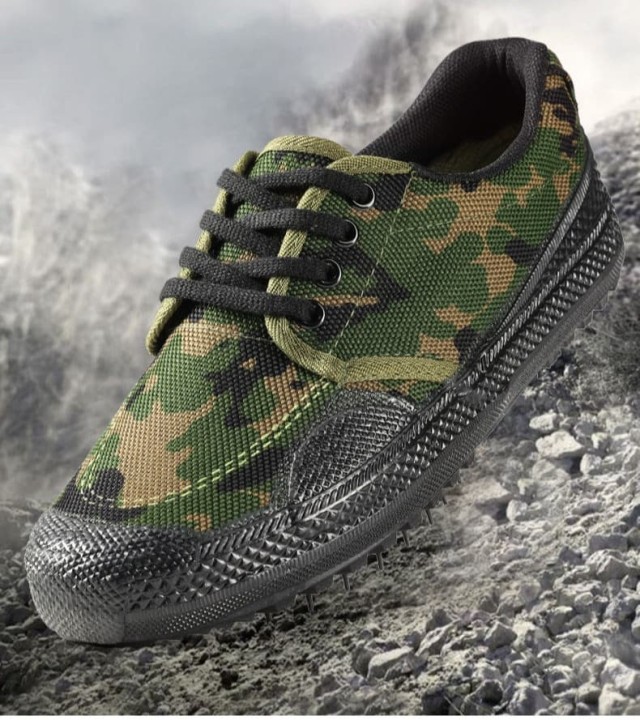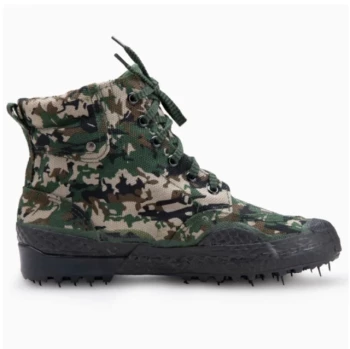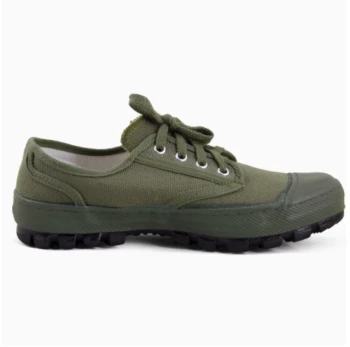Skateboarders chasing technical tricks face a constant dilemma: vulcanized shoes deliver unbeatable board feel but often lack the impact protection needed for gaps, stairs, and repeated landings. This guide reveals how to enhance your vulcanized skate shoes for high-impact terrain while minimizing injury risks—blending performance and protection through smart modifications and complementary gear.
Vulcanized Skate Shoes 101
Anatomy of Vulcanization: Why Thin Soles Dominate
Vulcanized shoes are skateboarding staples for a reason. Their construction—thin rubber outsoles glued to the upper and sealed with foxing tape—creates a lightweight, flexible design that molds to your feet. This process, called vulcanization, prioritizes:
- Board feel: Direct contact with the deck for precise flick control
- Flexibility: Natural foot movement for flip tricks
- Quick break-in: Less stiffness than cupsole alternatives
However, this minimalist design comes at a cost. Research shows vulcanized soles transmit nearly 30% more impact force to joints compared to cupsoles—a trade-off that becomes critical during repeated high-impact landings.
The Physics of Impact Absorption in Skateboarding
Every ollie down a 5-stair generates forces equivalent to 4–5 times your body weight. Vulcanized shoes, with their thin soles and minimal cushioning, struggle to dissipate this energy, leading to:
- Shockwave injuries: Stress fractures and joint pain from repeated impacts
- Premature sole wear: Thin rubber degrades faster under heavy abuse
Yet, abandoning vulcanized shoes isn’t the only solution. With strategic upgrades, you can retain their responsiveness while mitigating risks.
Optimizing for High-Impact Terrain
When Vulcanized Shoes Fail: Gaps, Stairs, and Shockwave Injuries
Vulcanized designs falter most noticeably in:
- Multi-stair gaps: Impact forces compound with each step
- Rough terrain: Pebbles and cracks magnify pressure points
- Extended sessions: Cumulative stress without adequate recovery
Skateboarders report 60% more foot fatigue after 2 hours in vulcanized shoes versus cushioned hybrids—a clear sign your gear needs reinforcement.
Insole Engineering: Gel vs. Foam vs. Orthotic Solutions
Upgrading your insoles is the fastest way to boost protection. Here’s how materials compare:
| Type | Impact Absorption | Board Feel | Durability |
|---|---|---|---|
| Standard Foam | Moderate (15–20% reduction) | Minimal loss | 2–3 months |
| Medical Gel | High (25–30% reduction) | Slightly muted | 4–6 months |
| Custom Orthotics | Targeted support | Varies by design | 1+ year |
Pro Tip: Look for low-profile gel inserts under 3mm thick—they preserve flick sensitivity while cushioning heels and balls of feet.
Beyond Insoles: Complementary Protective Hacks
Ankle Support Modifications for Vulcanized Designs
Since vulcanized uppers lack structural reinforcement, try these DIY upgrades:
- Lace locking: Skip the top eyelet to prevent overtightening while maintaining stability
- Neoprene sleeves: Wear under socks to reduce ankle shear forces by ~40%
- Reinforced collars: Apply shoe glue or patches to high-wear zones
Hybrid Solutions: When to Switch to Cupsole Alternatives
Even with modifications, some scenarios demand sturdier footwear. Consider cupsoles when:
- Skating transition: Lateral forces strain vulcanized seams
- Heavier riders (190+ lbs): Thin soles compress beyond effective range
- Recovery phases: Post-injury skating benefits from extra cushioning
Brands like 3515 now offer fusion designs—vulcanized-style uppers with cupsole-derived midsoles—delivering 80% of the board feel with double the impact protection.
Ready to Skate Harder, Hurt Less?
3515’s footwear engineering expertise helps distributors and brands deliver performance-optimized skate shoes that balance responsiveness and protection. Whether you need vulcanized precision or hybrid durability, our manufacturing capabilities ensure your customers get the perfect blend of board feel and impact safety.
How will you redesign your skate shoes for your next high-impact session?
Related Products
- Durable Rubber Sole Outdoor Shoes Wholesale & Custom Manufacturing
- Durable Spiked Camouflage Boots Wholesale & Factory Production
- Durable Canvas Work Shoes with Rubber Lug Sole | Wholesale Manufacturer
- Durable Rubber-Soled Utility Shoes for Wholesale & Custom Brand Manufacturing
- Wholesale Durable Camo Canvas Shoes with High-Traction Rubber Soles
Related Articles
- How Vulcanized Shoe Construction Delivers Unmatched Durability and Flexibility
- How Vulcanized Rubber Work Boots Outlast Alternatives – And When to Choose Differently
- How Vulcanized Soles Became the Unsung Hero of Urban Footwear Culture
- Optimizing Vamp Production for Vulcanized Shoes: Materials, Techniques, and Quality Assurance
- Why Vulcanized Shoes Dominate Durability and Comfort: A Technical and Practical Guide




















